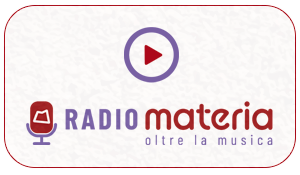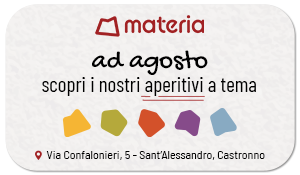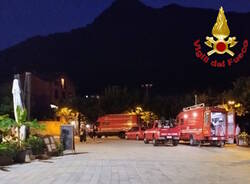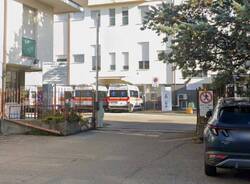The cultural perspective of safety at work
If we regard safety at work from a cultural point of view, it can be considered a social element.
If we regard safety at work from a cultural point of view, it can be considered a social element, that is, as the collective ability to generate management and work practices that protect both ecological equilibrium and individual wellbeing. This ability takes the form of an innovative and socially constructed practice, established in standards and values, which are passed on to those who join a company for the first time. On the other hand, the Constitution also guarantees the wholesomeness of workplaces and the health of those who work there. The most important regulation in Italy, in this regard, is undoubtedly Legislative Decree No. 81, of 2008.
Legislative Decree No. 81, of 2008
This is a text that specifies all the requirements that a workplace must satisfy in order to guarantee the safety and health of workers. Among other things, the decree specifies the tasks which the various workers involved must carry out, for example, in relation to health monitoring activities, which must be carried out by competent doctors, in order to prevent occupational diseases. The evaluation processes and decisions are management aspects that can contribute to preventing accidents or, on the contrary, to increasing the possibility of their occurring. The same can be said for the circulation of knowledge within the company system, for the integration of information, for the safety culture and for the training of operators.
Sicurya and safety at work
Sicurya is one of the Italian companies specialised in providing advice on safety regulations in the workplace. Its team of professionals work to contribute to improving and developing processes concretely; in this way, the client’s investments can receive the value they deserve. There are many services provided by Sicurya, such as the management of design practices and activities, but also training and instrumental surveys, without forgetting health monitoring services. The correctness of the procedures is demonstrated by acknowledgements and certifications, which are obtained over time.
A management approach
When we talk about occupational health and safety management, we do not only refer to the formal components that characterise any company, such as appointments, roles, organisational charts, and so on. The concept calls on the concrete and substantial elements with which companies operate, more than anything else. There are many of them, and it is worth mentioning all of them, starting with the availability of resources, followed by the decision-making processes that are developed, and going on to the cognitive abilities of the various subjects. Then, we must not forget the effective ability to intervene and adopt, the experience of the people and the emotional relationships between the members, including those of an informal nature.
The risk culture
It is also for this reason that the focus of the analysis is no longer on the personal level, but has shifted to the management side. The risk culture ends up at the core of the survey, whereas the individual responsibility of a person who makes a mistake is considered as the effect of corporate responsibility. The culture of safety at work that can be breathed in a company context also varies according to the ability itself of the company structure, which entails being able to integrate the safety dimension into the management dimension; this is only possible by sharing what can be defined as a safety culture.
The technical dimension
The technical dimension, when referred to safety at work, is expressed in texts, such as the operational safety plan on construction sites, and the risk assessment document in companies. If the employees respect the plans that have been produced by technicians and engineers, the information concerning safety is translated from theory into practice. One factor that cannot be underestimated is regulations, which focus on the idea that only the correct implementation of regulations can guarantee safety. Well, the activities of information, monitoring and control express this conviction. There are many control agencies, both locally and globally, that carry out the inspections that are necessary to verify that the meaning of the rules is genuinely understood.
Education and training
Education on safety at work can be provided using booklets, videos, manuals and many written texts. It is training agencies that help to put the concept of safety into everyday practice. A role that should not be underestimated is that of economic perception, in the sense that all too often, when profit is at risk, one tends to cut costs on safety.
Translated by Bocse Adriana, Graziani Edoardo, Perinelli Giorgia and Tropolini Alessia
Reviewed by Prof. Rolf Cook
La community di VareseNews
Loro ne fanno già parte
Ultimi commenti
fracode su Varese ancora in piazza per la Palestina: "Rompiamo il silenzio contro il genocidio"
Giuseppe Mantica su Un futuro nella musica per il cardiologo dell’ospedale di Gallarate Giovanni Gaudio in pensione a fine anno
Bustocco-71 su Il pericoloso gioco alla stazione Ferno-Lonate: ragazzini attraversano i binari nel tunnel
PaoloFilterfree su Dall’abbandono alla rinascita: la lunga marcia dell’ex Aermacchi
Felice su Il pericoloso gioco alla stazione Ferno-Lonate: ragazzini attraversano i binari nel tunnel
lenny54 su È arrivato il gran giorno a Monteviasco: dopo sette anni di stop riparte la funivia
















Accedi o registrati per commentare questo articolo.
L'email è richiesta ma non verrà mostrata ai visitatori. Il contenuto di questo commento esprime il pensiero dell'autore e non rappresenta la linea editoriale di VareseNews.it, che rimane autonoma e indipendente. I messaggi inclusi nei commenti non sono testi giornalistici, ma post inviati dai singoli lettori che possono essere automaticamente pubblicati senza filtro preventivo. I commenti che includano uno o più link a siti esterni verranno rimossi in automatico dal sistema.